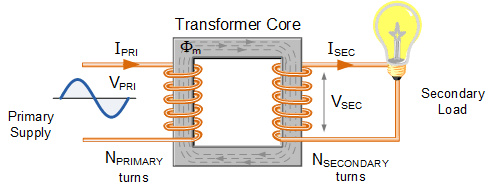
Why High-Speed Winding Generates Static Electricity — and How to Control It
- Spool or payoff reel
- Tensioner pads or damping rings
- Guide wheels (usually ceramic or plastic, both insulators)
- Coil bobbin or former
- Humidity regulation – Maintain ambient humidity between 50–60% RH to minimize charge buildup.
- Equipment grounding – Ensure all metallic parts, spools, and winding stations are properly grounded.
- Ionizing air blowers or bars – Neutralize charged surfaces by emitting positive and negative ions.
- Antistatic materials and coatings – Use conductive or static-dissipative components where possible.
Static electricity during high-speed winding is one of those subtle yet critical physical phenomena that often goes unnoticed in real-world manufacturing. For engineers and production managers, understanding the mechanism behind it is key to improving product quality, consistency, and yield.
The root cause of static electricity in winding processes is the triboelectric effect — the generation of electric charge through friction. You can imagine it as the same effect that causes the “crackling” sound or sparks when removing a sweater in winter. Let’s explore this phenomenon in depth: its core principles, influencing factors, and real-world impact on enameled wire manufacturing.

1. Core Principle: Contact, Pressure, and Separation
Static electricity doesn’t appear out of thin air — it results from charge separation and transfer between materials.
Atomic-level view:
All materials are made of atoms containing positively charged nuclei and negatively charged electrons. Normally, these charges balance each other, making the material electrically neutral.
Electron transfer:
When two different materials come into close contact, some electrons can transfer from one surface to the other — specifically, from the material that holds electrons more weakly to one that holds them more strongly.
Separation creates imbalance:
If the materials simply touch, the charges remain balanced. But when they separate rapidly, the transferred electrons can’t return. One surface loses electrons (becoming positively charged), and the other gains them (becoming negatively charged). The imbalance on the surface leads to static charge accumulation.
During high-speed winding, this contact–separation process occurs thousands of times per second. The enameled wire’s polymer insulation layer (an electrical insulator) rubs repeatedly against several machine components:
Because these components — typically plastic, ceramic, or nylon — are also insulators, the generated charges cannot dissipate easily. Instead, they accumulate on the surface of the wire and equipment, leading to a growing static potential.
2. Factors That Amplify Static Generation
Static buildup becomes especially severe under high-speed winding conditions, as several variables combine to intensify the triboelectric effect:
(1) Winding Speed
The faster the winding speed, the more frequent the contact and separation events per second. This increases frictional energy and enhances charge transfer, causing static voltage to rise rapidly.
(2) Pressure and Tension
Higher wire tension increases surface contact pressure between the wire and machine components, improving electron exchange and thus generating more static charge.
(3) Material Pairing
Different material combinations exhibit different levels of triboelectric charging. In the triboelectric series, materials that are farther apart generate higher static voltages when rubbed together.
For example, nylon and polyester — both common in enameled wire insulation — form a highly electrostatic pair.
(4) Environmental Humidity
This is one of the most influential environmental factors.
In dry air (below ~40% RH), the atmosphere behaves like an insulator, making it hard for charges to dissipate. In humid conditions, water molecules form a thin, conductive film on surfaces, allowing static charges to leak away gradually.
This is why static issues are particularly severe in dry autumn and winter seasons.
3. The Real Impact of Static Electricity in Winding
Static electricity is far from a minor nuisance — it can directly cause production instability, product defects, and safety hazards.
(1) Dust and Contamination
A statically charged wire acts like a micro vacuum cleaner, attracting airborne dust, fibers, and fine particles. When these contaminants are wound into the coil, they compromise insulation and may cause inter-layer short circuits under high voltage or high-frequency operation, leading to premature failure.
(2) Wire Repulsion and Misalignment
Excess charge of the same polarity causes wires to repel each other, leading to uneven winding, collapse, or “bird’s nest” formation. In extreme cases, electrostatic repulsion can even cause the wire to jump off the guide wheel, interrupting production.
(3) Electrostatic Discharge (ESD)
As static voltage builds up — sometimes to several thousand volts — it will seek a discharge path. If the coil’s bobbin or terminal is grounded, a micro spark can occur. While this may not affect standard coils, ESD can irreversibly damage sensitive components such as sensors or chip-level coils.
(4) Operator Safety
In dry conditions, accumulated charge on the machinery can discharge when touched by an operator, causing a mild but noticeable electric shock. While not dangerous, it can disrupt workflow and reduce safety confidence.
4. Effective Methods for Static Control
In precision winding and coil manufacturing, static control is an essential part of process engineering. Common and effective solutions include:
Through proper static control, manufacturers can achieve cleaner winding conditions, improved coil quality, fewer defects, and enhanced operational safety.
Conclusion
The generation of static electricity during high-speed winding is a natural consequence of the triboelectric effect — but it is not an uncontrollable one. By understanding the underlying physical mechanisms and applying proper preventive measures, engineers can effectively manage static charge, ensuring stable, high-quality enameled wire production even at the fastest winding speeds.
